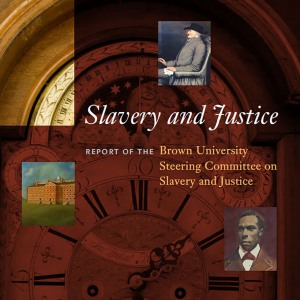2006 Report of the Steering Committee
Some of the founders and benefactors of our great University were holders or traders of slaves… We must not hide from that fact, for it is a part of our past, and in speaking its truth, we not only let the light in, but we give it air, making it shine more brightly.
In 2003, then Brown University President Ruth J. Simmons appointed a Steering Committee of faculty, students and administrators to study the University’s historical ties to the transatlantic slave trade. The result was the committee’s Report of the Brown University Steering Committee on Slavery and Justice, released in 2006.
The watershed report detailed how several of Brown’s founders and benefactors participated in and benefited from the slave trade, concluding with a list of recommended actions the University could take to confront its history. A 2021 expanded second edition released online and in print 15 years later with context and commentary, as well as a digital teaching edition, continue to broaden the report’s impact on Brown’s campus and around the globe.
In convening the Slavery and Justice Committee, Simmons said, she was driven by “the simple aim to teach us about ourselves.” But the report’s impact transcended that goal, ultimately spurring a major transformation on campus. The report, and the University’s 2007 response, birthed a center for slavery and justice research and scholarship, brought public art and public conversations to campus, drove new commitments to increase diversity, equity and inclusion at Brown, and established a culture of accountability that continues today.
The report also made a deep and permanent contribution to historical scholarship on racial slavery in the Americas and spurred a national reckoning on higher education’s entanglements with the institution of slavery.
The 2006 Report
Brown’s groundbreaking report was the culmination of three years of research, community conversations and deliberation.
More Resources
The University has curated historical materials capturing many elements of the research and activities of the 2003 Brown University Steering Committee on Slavery and Justice. The resources include committee member bios, communications and press materials about the activities of the committee, a curated steering committee event archive, access to Brown Library collections and archives of historical documents that contributed to the committee’s research, and extensive content about the lasting outcomes of the committee’s work.
While the original website for the Steering Committee on Slavery and Justice detailing its activities had to be retired because of outdated technology, the historic materials collected by the University serve as resources for scholars, educators and learners.
